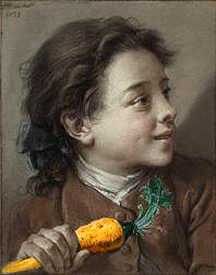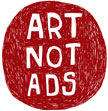8.28.2008
There's something poetic about getting back to the basics, just after reaching our 500th post. This year, I'm finally teaching a course that I've been wanting to do since I've started teaching, but haven't had the chance. Art foundations.
I wish I remember where I read about this lesson, because it worked fantastically well. Basically, you start with a black and white image. I started with this cropped photo of Bill Murray:

Next you blur the image. When I read about this project, the teacher had used a slide projector. I used the Gaussian Blur filter at 10px in Photoshop. This way, all you see are shapes, no concrete image. I also flipped it so there was little chance that they'd recognize it as a face at first:
The students said it looked like an eagle. Great! If they're seeing an eagle, they're not looking at it as a face- and that's the point. For this lesson, the students must see an image for the lights and darks. That way, they have practice at drawing the shadows of the face instead of the features. Students are often hampered by trying to draw a nose the way they think it should look rather the way shadows and light come together to define a nose. Here all they can draw is shadow and light. After they drew for about 15 minutes, I brought the blur radius down to about 6. That allowed more values to appear, and the students were required to erase and fill in new shapes that they saw.
After that, I brought it down to about 4, and that's when some of them (shocked) realized they were drawing a face. At that point, its important to keep them focused on drawing the lights and darks. Finally I eliminated the blur, and they could go back and add in the details.
Overall, it worked pretty well- the students were impressed with their results for the most part- one thing I would do differently next time - in addition to the gaussian blur, I'd take down the contrast a few notches- some students who started out too dark were more reluctant to make major changes. The big black shapes were just too inviting to not darken in as much as possible.
Oh- and our first exercise - two eggs and a box - worked tremendously well. All the students made the same assumptions we had made back when we were in high school. They appreciated the message about thinking outside the box (or inside the box depending on where the eggs appeared).














